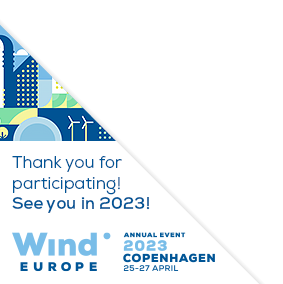Posters
Siblings:
ProceedingsProgrammeSpeakersPostersContent PartnersGlobal Markets TheatreWindTalks for InnovationProgramme Committee & Abstract ReviewersSpeaker's DashboardCome meet the poster presenters to ask them questions and discuss their work
Check the programme for our poster viewing moments. For more details on each poster, click on the poster titles to read the abstract. On Wednesday, 6 April at 15:30-16:15, join us on Level 3 of the Conference area for the Poster Awards!

PO055: Time domain hydrodynamics at panel level: an application to the structural analysis of Telwind
Eduardo Rodríguez-López, Analyst engineer, ESTEYCO S.A.
Abstract
This work presents the development of a novel methodology to integrate, in a coupled manner, all the actions (hydrodynamics, structural, aerodynamics, control, etc.) that are applied over a floating offshore wind turbine concept with the main focus on the structural behaviour of the floating platform. It enables consideration of internal stresses and deformation of the floating platform which could not be otherwise considered if the platform is assumed to be rigid. This tool provides a unique means to develop the floating platform from the conceptual stage of the design. The floating platform is represented by a flexible Finite Element (FE) model in Abaqus which enables consideration of deformations, internal stresses, etc. The current work focuses on the implementation of the hydrodynamic loads over the platform body. These loads are obtained by time-domain potential-flow theory applied at a panel level such that pressures coming from the various hydrodynamic contributions are applied over the structural FE model. The tool is implemented by an external in-house program (EST-PANEL) that has been developed for this purpose and is coupled with Abaqus. The proposed methodology therefore provides a fully coupled analysis where hydrodynamic and aerodynamic forces are dependent upon the platform movements. The tool is validated by means of comparison of the platform dynamics (assumed rigid for a consistent validation) under several free-decay tests with the well-known, extensively validated OpenFAST software. The agreement between the two methodologies is virtually perfect. However, the possibilities of the current approach go well beyond providing the dynamic response of the floating platform since it also considers platform flexibility and deformation and, consequently, a consistent structural analysis can be performed and integrated in the design process. An example of the potential of this tool is shown by applying it to study the structural behaviour of the Telwind platform.










Follow the event on: